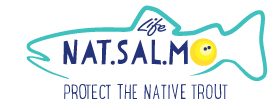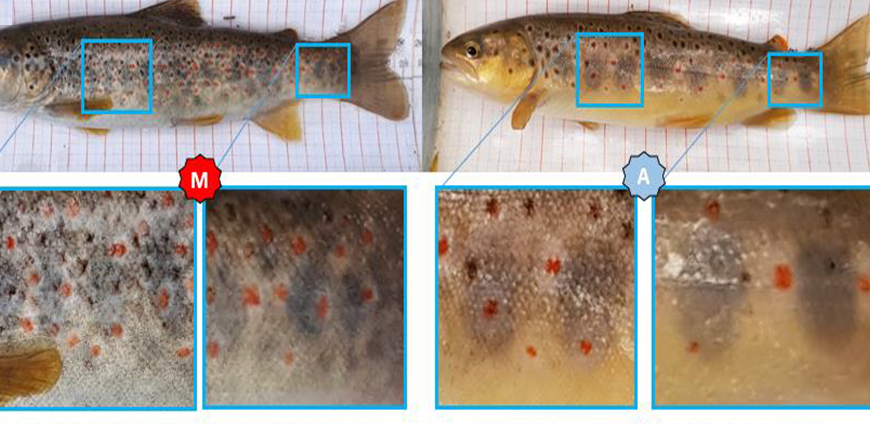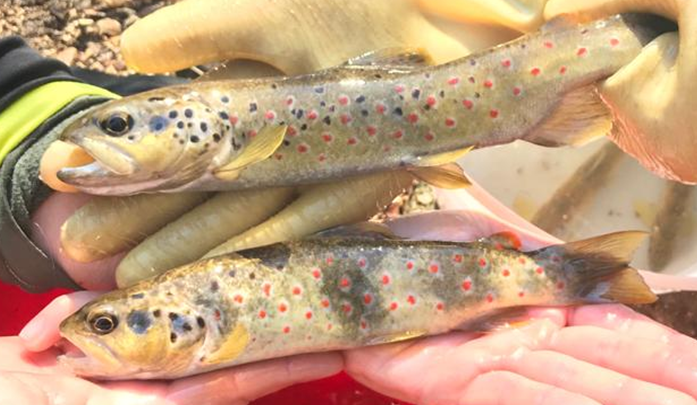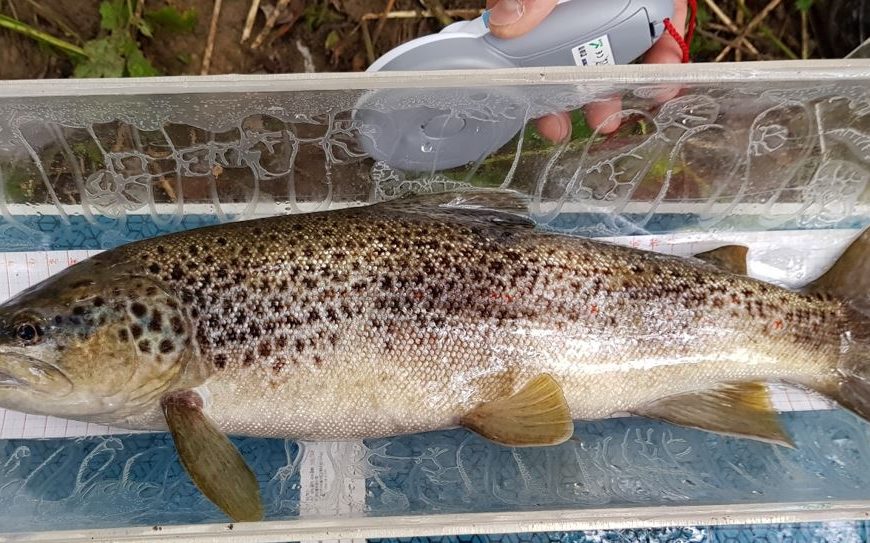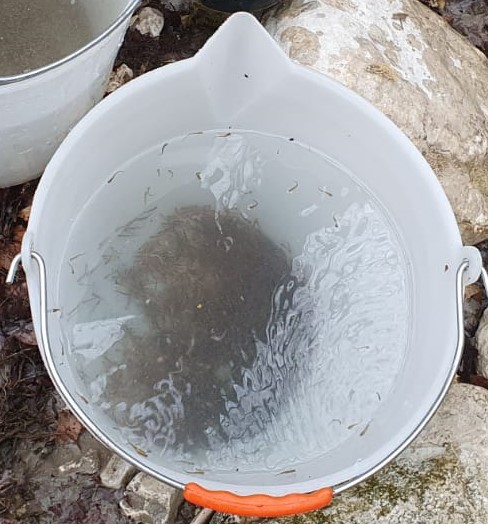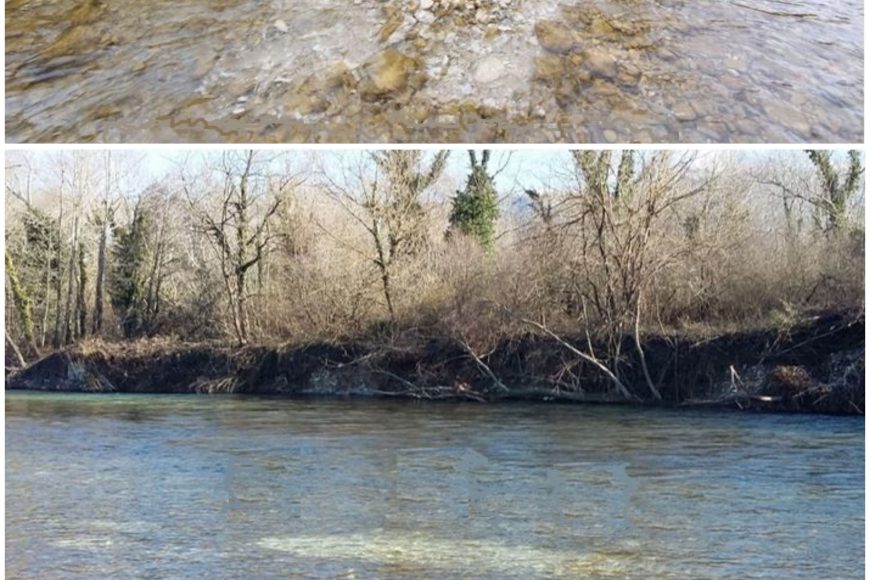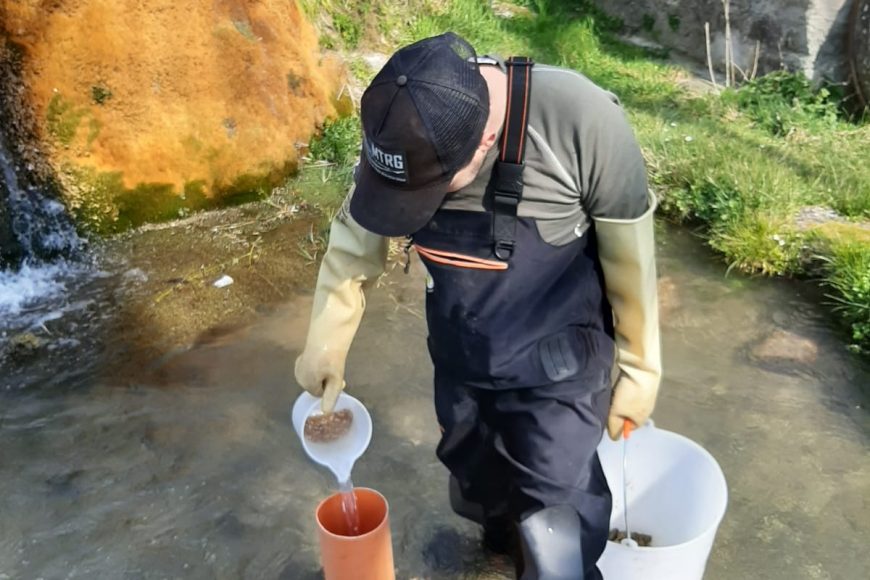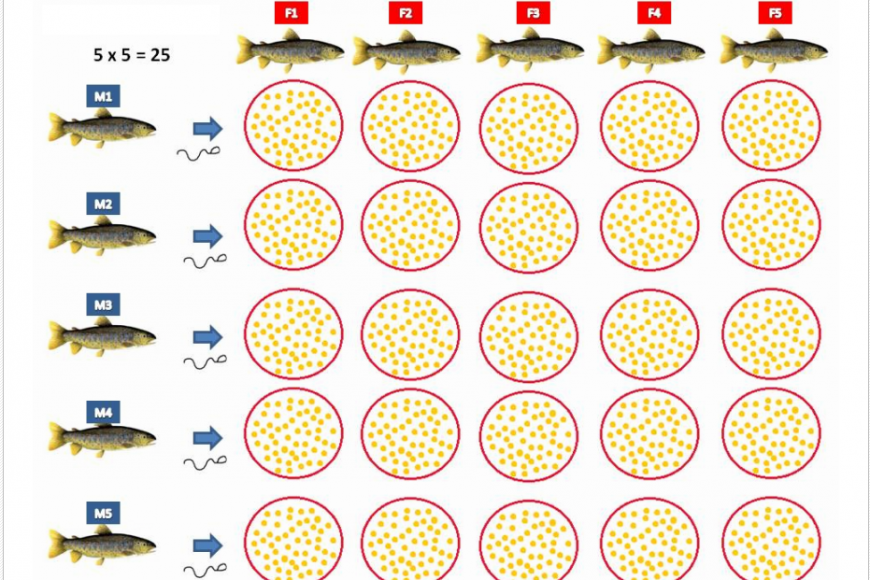In the sampled specimens, in addition to genetic analyzes, morphological ones concerning 7 phenotypic classifications are also carried out, including the analysis and comparison of the so-called “parr spots”. It is a matter of observing 9-13 large ellipsoidal blue-grayish spots present along the median region of each side, sometimes divided or fragmented and / or…
Blog
The first fry of the 2020 season
The photo is not that great, but it is the first documented native Mediterranean trout fry, born in an artificial nest of the Rio Santa Maria, the result of fertilization with cryopreserved seed. The success of the sowing activities can only be assessed by monitoring the next few years, but in the meantime numerous fry…
Volturno trouts
One of our cages for the control of the breeding was positioned in the Rio Caprionero, because it is from there that the trout from the Volturno river go back to go to reproduce. In fact, the main course of the river, although it has a good substrate for reproduction, is vulnerable due to the…
Work starts again in Oratino
After more than two months of lockdown in which Italy had to stop due to the pandemic from Covid19, we finally start again with all due caution. Work is underway in Oratino to make the hatchery accessible to all, in the hope of reopening our facilities to visitors as soon as possible.
Rio Freddo trout (Biferno river basin)
The photo shows us a genetically pure individual of about 50 cm caught just downstream of the entrance of the Rio Freddo in the main course of the Biferno. In the samplings of this winter and early spring we observed that a part of the spawners in the Biferno River go up the Rio Freddo,…
The sowing of the larvae
Among the various methodologies provided by our project, there is also the sowing of the larvae hatched in the hatchery and taken a few days before free feeding to avoid domestication. Here we are in Rio Freddo and we have just built a nest with the addition of plants and mosses that will provide protection…
Nesting in Volturno river
Before sowing, we dedicated ourselves to the construction of nests in the main course and in the sides of the Volturno river. The main course of the Volturno river was heavily hit by the floods of last autumn-winter and, following the monitoring carried out, we recorded a severe depletion of the salmonid population. For this…
Nesting & Cocoonig: step by step a fundamental action of our project
5,000 native trout eggs from Molise, genotyped and fertilized with cryopreserved semen are ready to hatch, protected in their nests rebuilt directly in the rivers they belong to. Reintroducing embryonic eggs of S. magrostigma native trout into the nests is a key factor to support natural reproduction and to support the recolonization of the project…
Artificial fertilization of wild indigenous people: how does it work?
As we have already said elsewhere, the first step is to select the breeding stock. The specimens are captured, temporarily retained and genetically characterized (or recognized, if already marked). Male migration begins first, therefore the semen is taken first, which is put to freeze in the cryobank. Subsequently the eggs are taken from a certain…
The eggs are close to hatching!
It is spring and the embryonic S. macrostigma eggs, fertilized this winter partly with fresh seed, partly with frozen one, are close to hatching. For this reason we must hurry and bring them to their rivers: despite the pandemic, in fact, the NatSalMo technical staff – with all the necessary precautions and strictly observing the…
